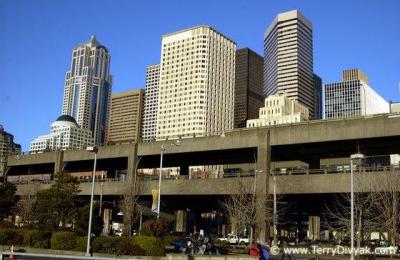
Expert report: Removing Seattle viaduct is viable
Report Finds Flaws in Alaskan Way Viaduct Traffic Analysis Used by the Washington State Department of Transportation.
Submitted on 09/12/2006. Tags for this image:Warning: Table './archive_cnu/watchdog' is marked as crashed and should be repaired query: INSERT INTO watchdog (uid, type, message, variables, severity, link, location, referer, hostname, timestamp) VALUES (0, 'php', '%message in %file on line %line.', 'a:4:{s:6:\"%error\";s:7:\"warning\";s:8:\"%message\";s:39:\"Invalid argument supplied for foreach()\";s:5:\"%file\";s:100:\"/var/www/archive.cnu.org/htdocs/sites/cnu.civicactions.net/themes/cnu/node-content_news_item.tpl.php\";s:5:\"%line\";i:13;}', 3, '', 'http://archive.cnu.org/cnu-news/2006/09/expert-report-removing-seattle-viaduct-viable', '', '3.149.231.122', 1732666227) in /var/www/archive.cnu.org/htdocs/includes/database.mysql.inc on line 135
 Download ( 0B)
Download ( 0B)09/12/2006
Engineers conclude that adequate street capacity makes not rebuilding the viaduct a “viable option” and call for analysis to be corrected for Seattle to make an informed decision on its Alaskan Way options
Traffic experts who have conducted a thorough review of the Washington State Department of Transportation’s analysis of the “no-replacement option” for the damaged Alaskan Way Viaduct have found significant flaws in that analysis, including the use of exaggerated estimates of future downtown street traffic and misleading conclusions about the amount of truck traffic on the viaduct.
The review by engineers Norman Marshall and Lucinda Gibson, PE of Smart Mobility reveals that WSDOT has used this flawed analysis to support its position that the viaduct should be rebuilt as an elevated structure and that a “no-replacement” alternative should be ruled out. Read the Alaskan Way Viaduct: Analysis of No-replacement Option.
A review of data prepared for WSDOT shows that removal of the viaduct would cause traffic to redistribute in a variety of ways, say Marshall and Gibson, as drivers choose different routes and destinations. The engineers conclude that downtown street network has additional capacity and that the impact of a no-replacement option on these streets “is likely to be manageable.” In fact, WSDOT is already working on this challenge as it plans to manage traffic during Alaskan Way project construction, note the authors.
While Marshall and Gibson call the “no-replacement” alternative studied by WSDOT a “coarse” version of the option to replace the viaduct with improved streets and transit service, they say that existing data show even the coarse option to be viable.
The report has some strongly worded findings about WSDOT’s misuse of data to create myths that have distorted the debate over what to do with the Alaskan Way viaduct. “In the debate on the Alaskan Way Viaduct, WSDOT has done the public a disservice by stressing in their communications simplistic and wrong-headed myths about the transportation system,” write Marshall and Gibson. “The picture they put forward is that more than 100,000 vehicles use the AWV to pass through the downtown, that a large portion of these vehicles are trucks essential to the region’s economy, and that without replacement, these vehicles would all divert onto downtown streets and cause catastrophic congestion. In fact, WSDOT’s own data show that most current peak period AWV traffic is not through traffic, that few of the vehicles are trucks, and that most of the trucks are also accessing downtown. WSDOT has not bothered to seriously analyze downtown street capacity.”
Marshall and Gibson take special exception to the traffic projections in WSDOT’s environmental impact statement for the no-replacement alternative. Although the Puget Sound Regional Council transportation model shows “little or no growth” in traffic on SR 99 ramps and local streets in 2030 because of growth in transit use, WSDOT chose to adjust the traffic estimates in these models upwards by 5 to 30 percent when considering the AWV options. The authors say WSDOT holds up its computer models like “the Wizard of Oz, saying the model says this, and we must accept it.” But in truth, WSDOT has adjusted the models with inflated traffic to fit their “mental models.”
WSDOT calls this practice “conservative,” but the authors note “this suggests that only the risk of building too little capacity is considered, and not the risk of purchasing too much capacity at an extravagant cost.”
CNU President John Norquist said the phenomenal cost of both rebuilding the elevated freeway and replacing it with a tunnel means the people of Seattle deserve to have the best information possible on a surface-streets-and-transit option that may prove very beneficial. “This transportation review shows that the experience of San Francisco, Portland, and Milwaukee deserves serious consideration in Seattle. Given how traffic has redistributed and how neighborhoods have come back to life, it’s hard to find anyone in these cities who would consider rebuilding the elevated freeway or digging a big tunnel.”
In order for Seattle to make an informed choice, WSDOT needs to correct a number of flaws in its no-replacement proposal, says the report. The revised model should:
• Use accurate downtown traffic volume projections instead of inflated volumes,
• Provide a detailed surface Alaskan Way with desirable urban speed (30 m.p.h.) and design features,
• include an improved distribution system to the north and south so that SR-99 traffic can smoothly reach parallel streets,
• include the increases in transit service that Seattle will soon be experiencing, and
• run the full model including the mode choice model to get proper transit forecasts.
Marshall and Gibson were hired by two national public-interest groups, the Congress for the New Urbanism and the Center for Neighborhood Technology, both based in Chicago, which have a grant from the SURDNA foundation to help evaluate the results in cities that have replaced elevated freeways with boulevards and other street improvements and to apply those lessons to cities that are considering what to do with elevated freeways in their downtowns. Smart Mobility’s experience includes transportation and planning analysis for the state departments of transportation in New York, Minnesota, Georgia, and New Hampshire among other clients.
The Congress for the New Urbanism is the leading organization applying the principles of city and town design to today’s development challenges. Working with architects, planners, transportation engineers, CNU advances walkable, compact neighborhood development as an alternative to sprawl.
Learn more about the Highways to Boulevards Initiative.
For more information, contact Stephen Filmanowicz, CNU, 312-551-7300

